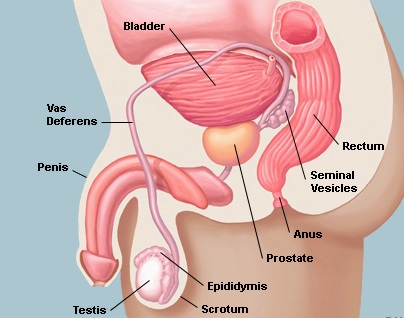
The penis is part of the male external genitalia located in the pelvis just above the scrotum. The penis is comprised of smooth muscle and blood vessels and is used for both sexual intercourse and urination. Cancer of the penis is rare with an annual incidence of about 1 in 100, 000 in the United States. Causes of penile cancer include poor hygiene, inflammation of the penis or foreskin, and infection with Human Papilloma Virus. Circumcision appears to provide protection against penile cancer if preformed in infancy or early childhood, but not when it is preformed as an adult. Penile cancer most commonly presents as a lesion on the penis or foreskin that can be either painful or not. Many benign lesions of the penis can present in the same way, so a biopsy is often needed to make the diagnosis. This is often preformed as an excisional biopsy, depending on the size of the lesion, where your doctor may try to excise the lesion with a surrounding layer of normal tissue. A circumcision is often preformed at the same time. Other tests to help stage the cancer include CT scan of the chest, abdomen and pelvis and bone scan to rule out any metastatic disease. Penile cancer most often spreads to the nodal tissue in the groin and then pelvis before spreading elsewhere. Penile cancer can be treated with surgery to the penis and regional lymph nodes. This surgery may involve circumcision with removal of part of the penis or total removal of the penis. In the latter situation an opening from the skin to the urethra is made in the perineum, between the scrotum and anus, to allow urination. The amount of penis and groin nodes to be removed depends on the size and aggressiveness of the penile lesion and the amount of groin nodes involved. Other treatments include radiation to the penis and regional lymph nodes and chemotherapy, which is often reserved for advanced disease. Most contemporary studies have suggested a combination of these treatments to allow maximum oncologic efficacy and penile preservation.









